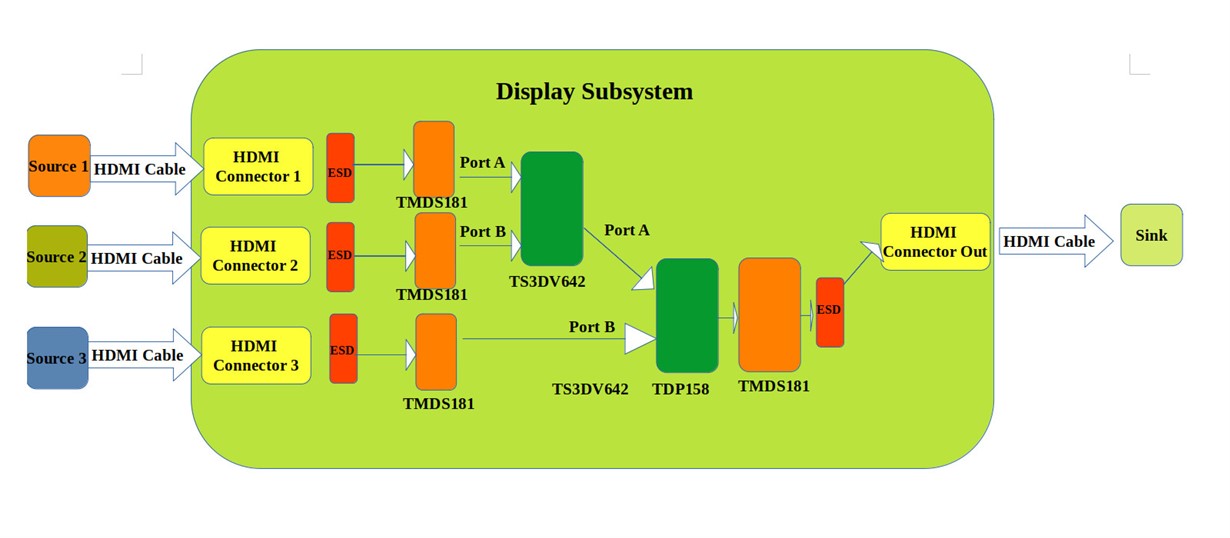Other Parts Discussed in Thread: TDP158, TMDS181, TMDS171, TIDA-050001
Hi,
We are looking for a 3:1 HDMI MUX solution, and in some of the forum posts I have seen that its possible to cascade two TS3DV642 for achieving this. Referring the datasheet of TS3DV642 ,the PORTA and PORTB seems to have different loss parameters. So do we have to follow any specific order in cascading / use any redrivers to compensate these losses?? If so do you have any application note or reference for the same??
Thank you
Regards
Sreekanth MK





